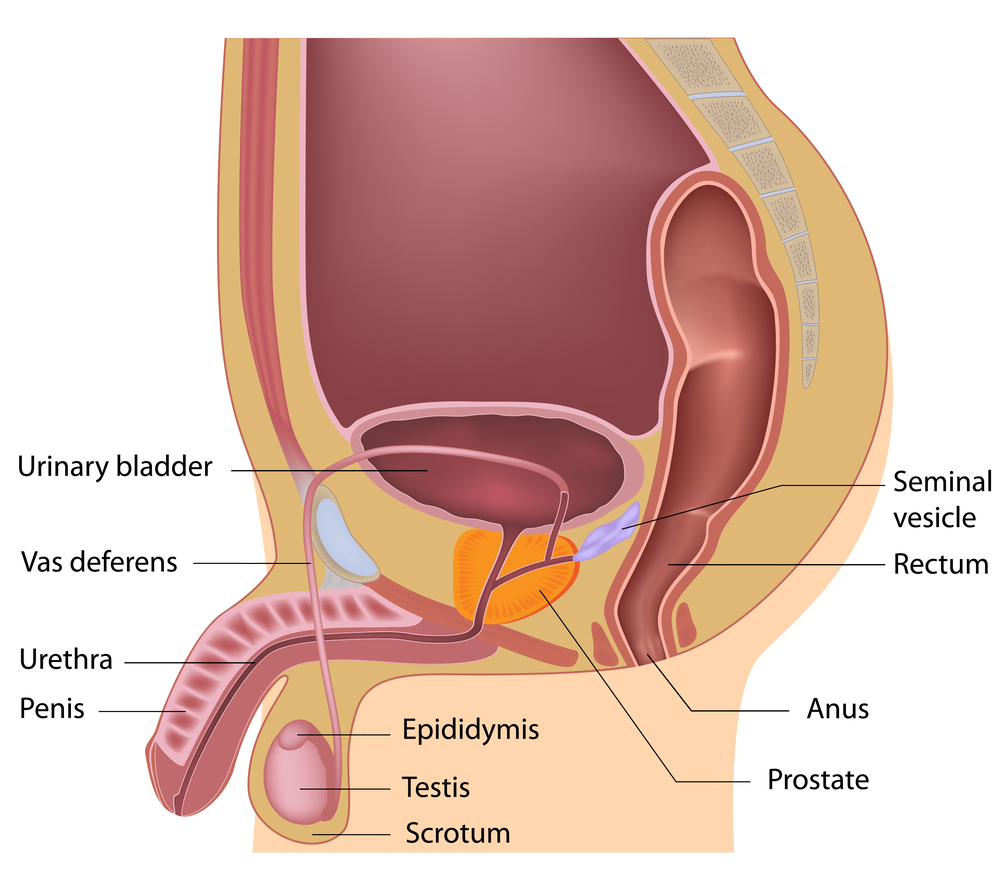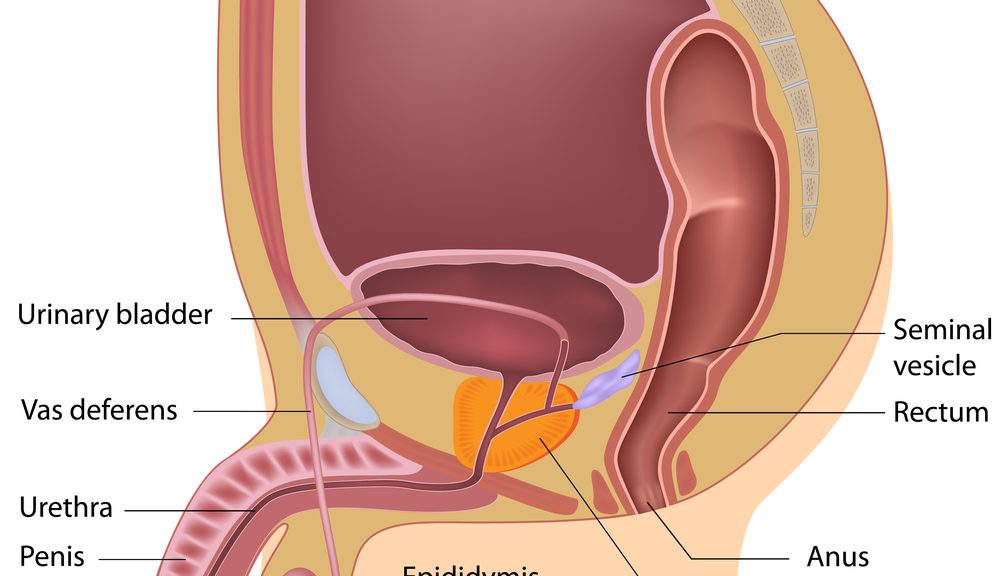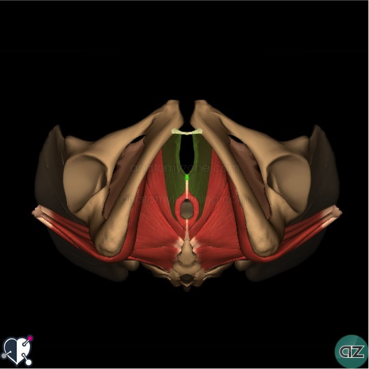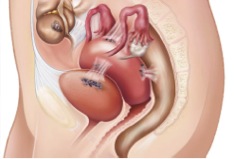
Prostatodynia or Chronic Pelvic Pain Syndrome (CPPS) is a pelvic pain condition found in men. This condition involves inflammation of the prostate gland. Usually, this leads to pain, discomfort especially involving urination, bowel movements, and sexual dysfunction. While part of the management of this condition involves medical management, Pelvic Physiotherapy plays an important role in recovery as well.
Types of Prostatitis
- Acute bacterial prostatitis is an infection of the prostate. This type of prostatitis causes chills and fever. In this case, you need your doctor’s attention promptly!
- Chronic bacterial prostatitis is a persistent bacterial infection
- Chronic pelvic pain syndrome (CPPS) or nonbacterial prostatitis has the same long-term symptoms but the cause is not from a bacterial infection. This type can be managed with physiotherapy treatment, and will be the main focus of this article.
What are the symptoms of prostatitis?
• Pain in the testicles, or tip, shaft or base of the penis
• Pain at the perineum (the area between the testicles and penis)
• Urination causes pain
• Increased pain in sitting
• Pain or discomfort with sexual arousal, or during or after ejaculation
• Pain or discomfort above the pubic bone
• Urinary frequency
• Urinary urgency
• Pain before, during, or after a bowel movement
• Decreased interest in sex
How is nonbacterial prostatitis found and treated?
First, investigations in this case show that bacteria and yeast are negative. The physical examination does not usually show anything unusual. However, the prostate may be swollen. What can make the problem even more confusing is that often young, otherwise healthy men develop this condition. Antibiotics, painkillers, and medications prescribed are often not effective. Many men have been told that they must learn to live with the symptoms because a cure is not available.
Pelvic Floor Physiotherapy is essential for recovering from prostatitis that is not the result of an infection. This involves an assessment by a Rostered Pelvic Floor Physiotherapist.
The Pelvic Health Physiotherapist creates an individualized treatment program. Treatment is based on the level and type of pelvic floor dysfunction, symptoms, and response to the treatments.
The following treatment programs and techniques may be involved in Pelvic Physiotherapy for prostatitis:
Muscle relaxation and strengthening techniques
Trigger point release therapy is also known as myofascial trigger point release. It is often helpful for treating CP/CPPS symptoms that are associated with stress and tension of the pelvic floor muscles.
Trigger point release therapy is often combined with paradoxical relaxation therapy. This exercise method involves autonomic self-regulation. This decreases pelvic floor muscle tension by teaching you how to self-release this tension. Paradoxical relaxation involves a specific breathing technique to help relieve anxiety.
Alternatively, weakness in the pelvic floor may be contributing to the issue. In this case, strengthening with specific exercises is important. It will help increase the support in the pelvic floor and lead to better function of the overall system.
Education and holistic care
Total body (exercise, chronic stress management, diet, lifestyle) changes help relieve pain. Education on posture, stress reduction techniques (ex. mindfulness) and proper body mechanics are important to relieve pressure on the pelvic area. Ultimately, following this advice is important for keeping yourself pain and symptom free in the long-term. Additionally, some foods have been associated with irritation including:
• Spicy foods
• Hot peppers
• Alcoholic beverages
• Acidic foods
• Wheat
• Gluten
• Caffeine
Check out this patient’s experience.
If you are experiencing issues with prostatitis or other types of pelvic pain, look for PhysioNow! We have fantastic Pelvic Physiotherapists to get started on your recovery from Prostatitis. We have 10 fully accessible locations across the GTA from Burlington all the way to Etobicoke. Book with PhysioNow today for your first assessment and treatment!




